| 12-45mm |
$524 average price |
|---|---|

|
|
Your purchases support this site
Buy the Olympus 12-45mm f/4 Pro M.Zuiko Digital ED
Updates:
04/06/2020: Field Test & Gallery Images posted
Olympus 12-45mm f/4 Pro Field Test
This tiny Pro-class zoom packs performance without the weight
by William Brawley | Posted 04/06/2020
 |
E-M1 III: 12mm, f/4, 1/500s, ISO 200 |
Announced alongside -- though not kitted with -- the new flagship Olympus E-M1 Mark III camera earlier this year, the new Olympus 12-45mm f/4 Pro lens is a bit of a head-scratcher at first glance. With a focal length range of 12-45mm, there's a significant overlap with the existing Zuiko Pro lens, the older 12-40mm f/2.8 Pro. You gain just five extra millimeters of reach, yet you get a dimmer f/4 aperture. In some ways, it doesn't feel all that enticing of an option.
That was my first reaction upon hearing about this lens. Why would I want this lens over the 12-40mm? That lens is already small and lightweight, super sharp, and you get a brighter f/2.8 aperture. And if you want more reach and are okay with an f/4, yet another Olympus Zuiko Pro zoom also exists: the 12-100mm f/4 IS Pro.
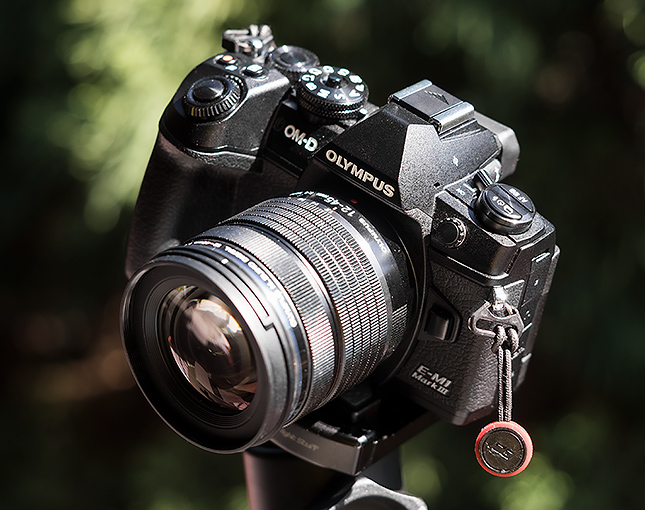 |
The compact 12-45mm f/4 Pro certainly feels more at-home on the E-M5 III, but I didn't have access to that camera. Still, it looks and feels quite nice on the larger E-M1 III, too. |
However, after seeing the 12-45mm f/4 Pro in-person and using it for a while, I've changed my tune for the most part. I, personally, would still like a somewhat different focal length range (this is the third Zuiko Pro lens to start at 12mm). But, the 12-45mm is, nevertheless, yet another great Zuiko optic, and it is indeed much smaller than the 12-40mm. It's also lighter and less expensive, and these are all essential qualities to consider when picking a lens. And depending on the type of Olympus Micro Four Thirds camera you use, the 12-45mm f/4 Pro can make a fantastic pairing.
Let's see how this lens stacks up...
Key Features & Specs
- 24-90mm-equivalent zoom range (3.75x zoom)
- Constant f/4 aperture
- 12 elements in 9 groups
- Includes 2 High-Refractive lenses, 1 Dual-sided Aspherical lens, 1 Super HR lens, 2 Aspherical lenses & 2 ED elements
- ZERO (Zuiko Extra-low Reflection Optical) Coating.
- Close-focusing distance of 12cm (4.7in) at 12mm, 23cm (9.1in) at 45mm
- 0.25x magnification ratio
- Weight of just 254g (8.96oz)
- 58mm filter thread
- IPX1-rated weather-sealed construction
- Price of just US$649.99 (CAD$849.99)
Design & Handling
At first glance, the new Olympus 12-45mm f/4 Pro basically looks like a miniaturized 12-40mm f/2.8 lens. It, like other Zuiko Pro lenses, uses a similar overall design and styling, and features robust build quality. The 12-45mm really feels just like the 12-40mm, only tinier. The new lens has the same ridged metal zoom ring and a thinner focusing ring out towards the end. The barrel construction is, again, made of metal, and the entire lens feels sturdy and very well built. And while I have full confidence in the weather-sealing of my older 12-40mm, which has experienced a good bit of rain and water, Olympus goes a step further with the 12-45mm and gives it a solid IPX1 rating for environmental sealing. Nice.
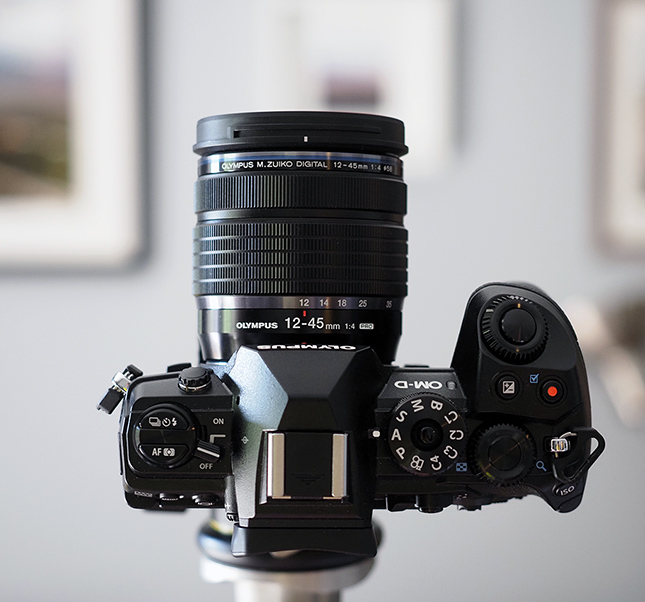 |
The only two notable external features that the 12-45mm lacks compared to the 12-40mm is the customizable "Lens Function" button on the side of the barrel and the pull-back clutch mechanism on the focusing ring. To toggle between autofocus and manual focus, you'll simply need to use the camera menus. Personally, I don't find the lack of the "clutch" a drawback, as I often accidentally knock the focusing ring back to the MF position on other Zuiko Pro lenses. (Others clearly do this quite often, too, as Olympus has added an option in their cameras to disable the AF/MF clutch altogether -- which I usually do. Editor's note: DP does miss the clutch, and uses it quite often in the field with the other Pro Zuikos that have one, especially during video production.)
Operating the lens is an enjoyable experience. The zoom ring is nearly the same width as on the 12-40mm, while the focusing ring is noticeably thinner. Both rings are metal and feature a nice ridged texture for a secure grip, just like on other Zuiko Pro lenses. The action on the zoom lens is very smooth, with a relatively light amount of rotational resistance. It's noticeably smoother and takes less effort to turn the zoom ring on the 12-45mm than with my older 12-40mm lens; the 12-40mm has much more resistance to its zooming mechanism. There are about 45 degrees of rotation to zoom through the full range on this lens, which is about the same as on the 12-40mm, though the 12-45mm's lens barrel doesn't extend outwards nearly as much when zooming to the longer focal lengths.
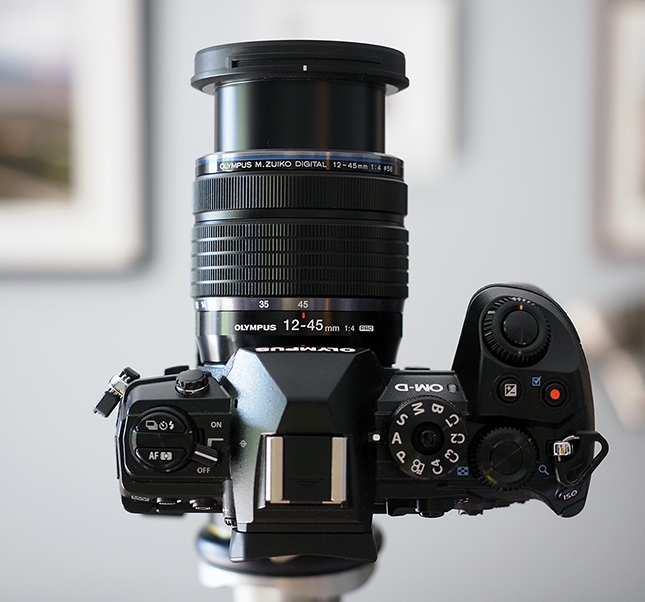 |
Similarly, the focus ring on the 12-45mm feels very smooth, smoother than on the 12-40mm. One consequence of the aforementioned lack of the AF/MF clutch mechanism is that the 12-45mm doesn't offer any focusing distance scale. Strangely, there's also no in-camera display of focusing distance, either, so keep that in mind if you want or need specific focusing distances while out shooting (for instance, there's no clear visual way to find the exact infinity focus mark with the 12-45mm).
 |
E-M1 III: 36mm, f/4, 1/400s, ISO 200 |
As I mentioned earlier, when I first heard about the 12-45mm lens, I kept wondering why this lens would need to exist when the 12-40mm f/2.8 is already available. To me, the 12-40mm is already really small. But, in the Micro Four Thirds world, it's actually a bit large size for such a lens. Compared to a similar f/2.8 wide-to-medium zoom for an APS-C or full-frame system, the Olympus 12-40mm is downright minuscule. However, the 12-40mm f/2.8 can feel on the bulkier side and a bit more unbalanced when used on smaller Micro Four Thirds camera bodies, such as the E-M5 or E-M10 series.
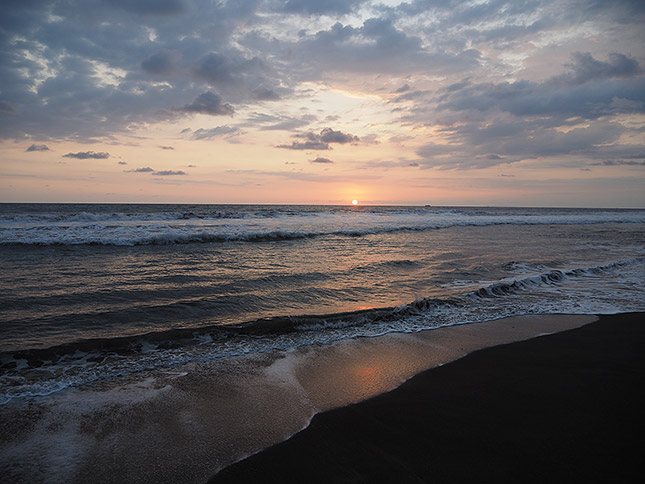 |
E-M1 III: 12mm, f/4, 1/160s, ISO 200 |
And here's where the 12-45mm f/4 comes in. The 12-40mm feels right at home on the E-M1 III and E-M1X; those cameras' larger sizes with fuller handgrips match well with the heavier size and longer-extending design of the 12-40mm. But if you want something lighter and more compact to pair with a smaller, lighter MFT camera, the 12-45mm f/4 Pro is a perfect match. The weather-sealed design of the 12-45mm makes it an especially well-matched pairing for the lighter, yet still-weather-sealed E-M5 III. Of course, you sacrifice a bit on the light-gathering capabilities with the f/4 aperture compared to the f/2.8 of the 12-40mm, but unless you shoot a lot in low-light situations, the 12-45mm doesn't offer much in the way of compromises. The build quality is fantastic, and the smaller size really makes for a pleasing shooting experience with smaller cameras. It's an excellent walk-around lens for traveling and general photography subjects as well as other outdoor pursuits where you want a camera system to be as light as possible, as it zooms from classic wide angle all the way to classic portrait focal lengths.
 |
E-M1 III: 12mm, f/4, 1/640s, ISO 200 |
Image Quality
When it comes to image quality performance, the 12-45mm f/4 Pro maintains the excellent quality I've come to expect from Olympus' Pro-series of lenses. Throughout the zoom range, the sharpness is very good, with wonderful resolving power in both the center and out at the corners. In general, shooting the lens wide-open provides sharp results across its focal length range. I, personally, would have no issue shooting the lens at f/4 all the time, stopping down only as needed for exposure issues or if I really needed a deeper depth of field for a certain type of composition. However, at close inspection, I did notice a very, very subtle increase in sharpness if you stop down to f/5.6. Detail at f/8 is also very good and extremely similar to f/5.6 at the focal lengths I tested in the field. Once you get to around f/11, you start to see diffraction-related softness begin to increase, though it's much more prominent by f/16 and definitely noticeable at f/22. Shooting at f/16-22 should definitely be avoided if fine detail is critical.
Vignetting is also very well controlled across the focal length range, though it's not completely absent. As expected, vignetting is the strongest -- but by no mean egregious or distracting, in my opinion -- at f/4. Shooting some test shots at 12mm, 25mm, and 45mm, I noticed slight vignetting at all focal lengths when shot wide open. At 12mm, it's basically gone by f/11, though it's already extremely minimal at f/5.6. At 25mm and 45mm, stopping down to f/5.6 will basically do away with any noticeable vignetting.
Chromatic aberration was also very much a non-issue during my time with the lens, as CA is very well controlled. That said, I did see a hint of CA on occasion on some very bright specular highlights and a few instances of purple fringing along the edges of some heavily back-lit objects. For the most part, though, CA was of little concern in my day-to-day shooting with the 12-45mm lens.
 |
100% crop of the image above - RAW file opened in ACR with default settings. |
Focusing
Like other Olympus Micro Four Thirds lenses, the 12-45mm f/4 offers a super-fast focus-by-wire AF system. The optical layout for the 12-45mm is such that it uses only a single, small lens element for its moving focusing element -- in other words, no heavy, multi-lens focusing group that could slow things down. The MSC Movie & Still Compatible autofocus system in the lens provides quick and practically-silent focusing performance, making it a good choice for stills and video shooting where you wouldn't want noisy focusing disrupting your footage.
As I've experienced with other Olympus lenses, the AF performance on the 12-45mm f/4 Pro is excellent. On its own, the 12-45mm focuses really quickly, across its focal range, though I did feel that AF at 12mm was ever-so-slightly quicker than at 45mm. Interestingly, side-by-side against the 12-40mm f/2.8, I did find the 12-45mm was slightly slower at 45mm compared to the 12-40mm at 40mm. The speed difference is very minor, and in the field, I doubt the 12-45mm would be at all problematic. However, the 12-40mm, at 40mm in particular, did seem to "snap" into focus and rack focus from close to far distances nearly instantly, while the 12-45mm at 45mm was ever-so-slightly slower to do the same.
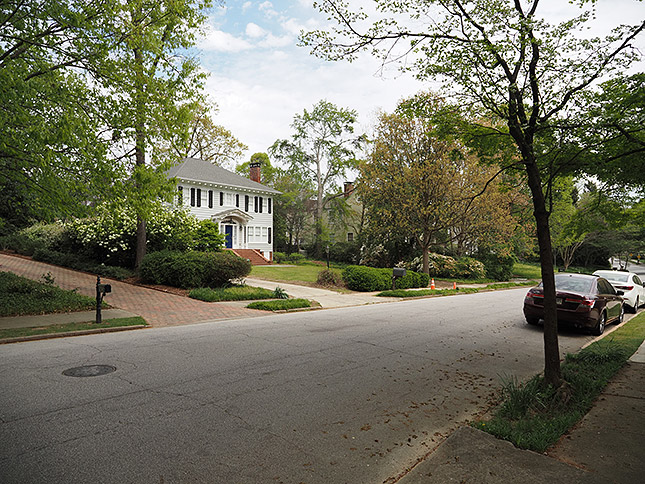 |
E-M1 III: 12mm, f/4, 1/1000s, ISO 200 |
In general, however, single-shot AF with the 12-45mm is still very fast. The lens acquires focus practically instantaneously upon half-pressing the shutter button. Given the focal length range, I didn't use the 12-45mm all that often for tracking moving subjects. However, I never experienced any issues with speed or performance when I did happen to switch over to continuous focusing.
One of the coolest features of the 12-45mm is its excellent close-focusing capabilities. It's not a true macro lens, but it can still focus down very closely -- especially at 12mm -- making it a great choice for close-up "macro-like" shooting. I was already impressed by the 12-40mm's close-focusing abilities, but the 12-45mm is even better at the wide end. Across its zoom range, the 12-40mm can focus down to 0.2m, but at 12mm on the 12-45mm, you can get as close as 0.12m (and down to a similar 0.23m at 45mm). It's a nice feature to have, adding to the versatility of this little lens.
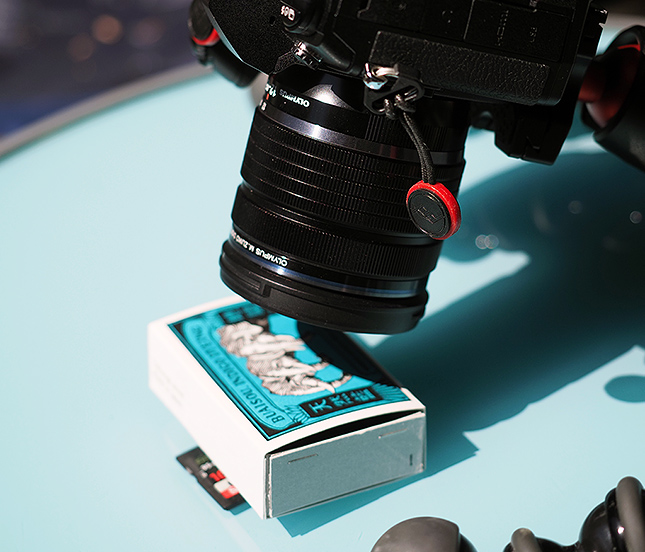 |
Though not a macro lens, the 12-45mm has impressive close-focusing abilities, especially at 12mm. |
 |
E-M1 III: 12mm, f/4, 1/125s, ISO 200 |
When it comes to manual focus, there aren't really any surprises. Like other Zuiko Pro lenses, the 12-45mm is a focus-by-wire system, which means the focusing ring will turn forever and won't function unless you're explicitly in Manual Focus mode (or unless you enable AF+MF in the camera menus, which provides manual focus override functionality in autofocus modes.) As mentioned earlier, this lens lacks the clutch focusing ring like most other Zuiko Pro lenses and thus lacks a focus distance scale. Olympus cameras lack a digital on-screen focusing distance too. If you need to manually focus precisely, you'll have to do it by eye, and use in-camera focus peaking and/or scene magnification to ensure critical focusing.
 |
E-M1 III: 45mm, f/4, 1/100s, ISO 200 |
Summary
What I liked
- Excellent image quality
- Compact size yet still weather-sealed
- Super-smooth zooming
- Fantastic close-focusing
What I didn't like
- f/4 might be limiting for some situations
- Focal length range overlaps with existing Olympus lenses
All in all, despite my initial hesitation with the Olympus 12-45mm f/4 Pro lens, this compact zoom lens is very enjoyable to use. True to it's "Zuiko Pro" classification, the 12-45mm offers top-notch durability and construction as well as excellent image quality and AF performance.
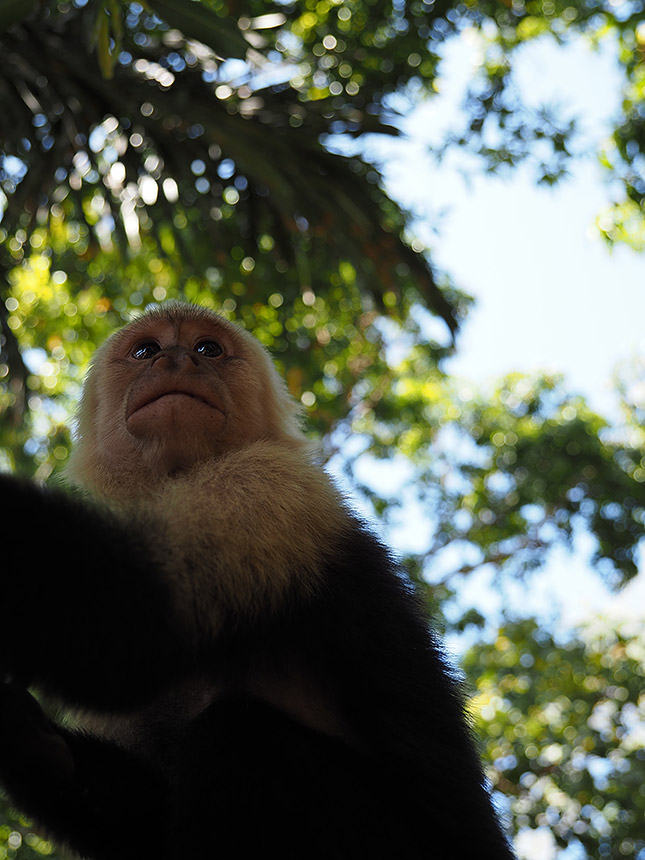 |
E-M1 III: 25mm, f/4, 1/200s, ISO 200, +0.3EV |
Sure, the f/4 maximum aperture is less enticing than f/2.8, particularly in this case given the existence of the 12-40mm f/2.8 lens, but it really does make the lens all the more compact and easier to handle and travel with. If you shoot a lot in low light and can't always counteract a slower aperture with longer shutter speeds and IBIS performance, then the 12-45mm might not be the best choice. Similarly, if you're already in the Olympus world and shoot with one of their larger MFT cameras like an E-M1 II or III or the E-M1X, the 12-45mm might also not make a ton of sense when it comes to weight savings and portability. Again, the 12-40mm f/2.8 might be a more useful or a more appropriate pairing with those cameras.
But, if you use an E-M5-series camera, then the 12-45mm fits right in with that camera. The new E-M5 III, in particular, given its IPX1-rated sealing and this compact, weather-sealed zoom feel tailor-made for each other. The 12-45mm really is impressively compact, particularly for a weather-sealed, constant-aperture zoom lens. Combined with a 24-90mm-eq. zoom range, it's impressively versatile too.
 |
E-M1 III: 12mm, f/5.6, 1/400s, ISO 200 |
Plus, regardless of camera body choice, with a price of $650, the 12-45mm is the least expensive Zuiko Pro lens offered yet, making it an appealing option nonetheless. At launch, the 12-40mm f/2.8 was priced at $1000 and is still offered for sale, some seven years later, at around $850, depending on promotions. The 12-45mm therefore offers a lot of bang for your buck.
At the end of the day, if you're looking for a high-quality and highly-portable zoom lens for traveling, landscapes, general shooting and even portraiture and close-up shooting, the Olympus 12-45mm f/4 Pro lens is an excellent and affordable choice.
• • •
Olympus M.Zuiko Digital 12-45mm f/4 PRO - Overview
(From Olympus press release)
CENTER VALLEY, Pa., February 12, 2020 — Olympus is pleased to announce the M.Zuiko Digital ED 12-45mm F4.0 PRO lens, scheduled for availability April 7, 2020. This high-performance medium range zoom PRO lens conforms to the Micro Four Thirds System standard and features superb optical performance at all focal lengths, while being the world’s most compact, lightweight model. The M.Zuiko Digital ED 12-45mm F4.0 joins the M.Zuiko PRO category of lenses, possessing dustproof, splashproof and freezeproof (-10 degrees C) performance that delivers excellent image quality and peace of mind even when shooting in the most severe environments. This lens delivers superb resolution to the edge of the frame across the entire zoom range, making the most of the appealing aspects of the Micro Four Thirds System standard. It features supreme macro capabilities with a maximum magnification of 0.5x (35mm equivalent) across the entire zoom range, making it an anytime, anywhere, all-around lens. When paired with the Olympus OM-D E-M5 Mark III, this lens delivers high resolution and amazing portability to conveniently carry in a small bag.
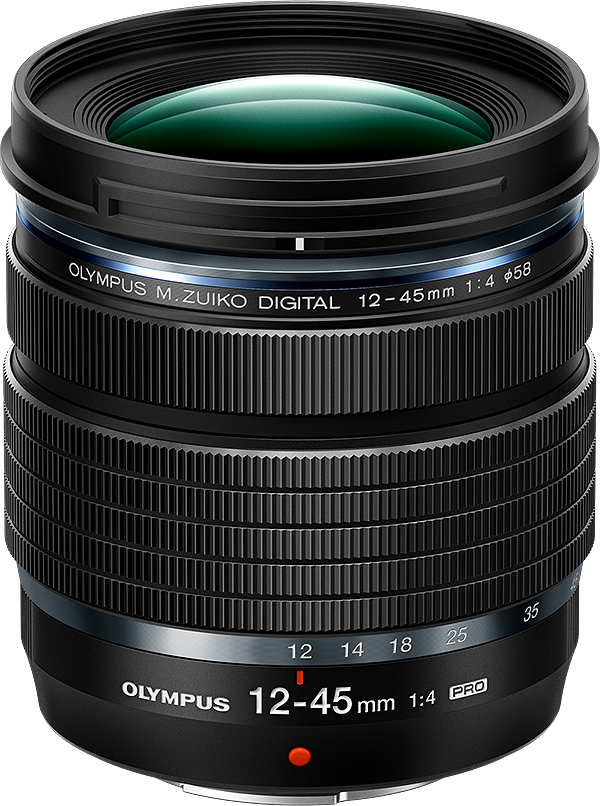 |
The M.Zuiko Digital ED 12-45mm F4.0 PRO lens is the world’s most compact, lightweight medium range zoom PRO lens with a fixed aperture value covering a focal length from wide angle 24mm to telephoto 90mm (35mm equivalent). It consists of nearly 190 precision machined components all mounted in a dense configuration, resulting in a size of 63.4 mm./2.5 in. (max. diameter) x 70 mm/2.76 in. (overall length), and a weight of approximately 254 g/8.96 oz. This small and lightweight lens delivers high-speed, precise autofocus for capturing any subject. Its dustproof and splashproof construction contains sealing in nine places to keep out dust and rain, providing peace of mind when shooting in active situations.
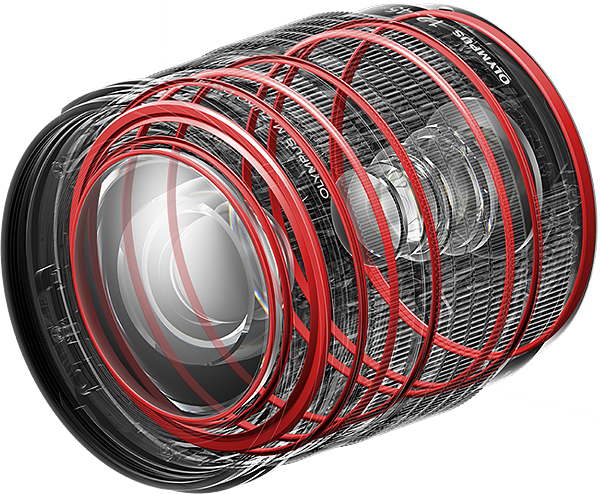 |
Weather sealing |
Effective placement of aspherical lenses and ZERO (Zuiko Extra-low Reflection Optical) Coating provide clear depictive performance, drastically reduce aberrations, ghosts, and flare for sharp, high-definition image quality. Suppressing loss of light at the edges of images makes it possible to obtain bright, clear depictive performance up to the very edges. Because the aperture value is fixed across the entire focal length, it is easy to control the exposure when zooming and when recording video.
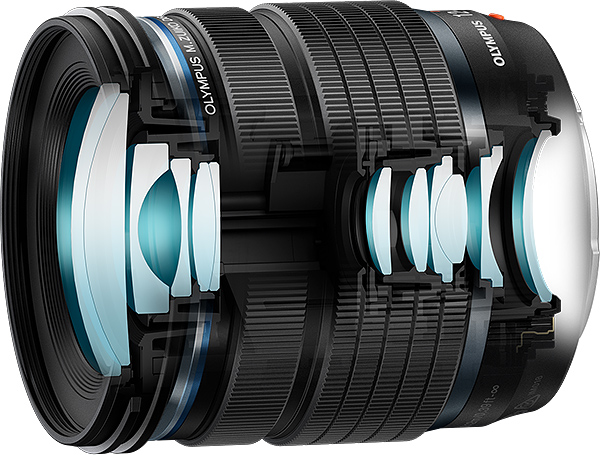 |
Enjoy macro shooting with a maximum magnification of 0.5x (35mm equivalent) across the entire zoom range. The closest focusing distance is 12 cm at the wide-angle end, and 23 cm at the telephoto end, delivering a wide range of macro shooting effects, including wide-angle macro shots that emphasize a sense of perspective by capturing vast backgrounds, and telephoto macro shots for more significant background defocusing effects. Diverse macro effects are possible, such as Focus Stacking, which generates a single image on the camera with a large depth-of-field in focus from the foreground to the background.
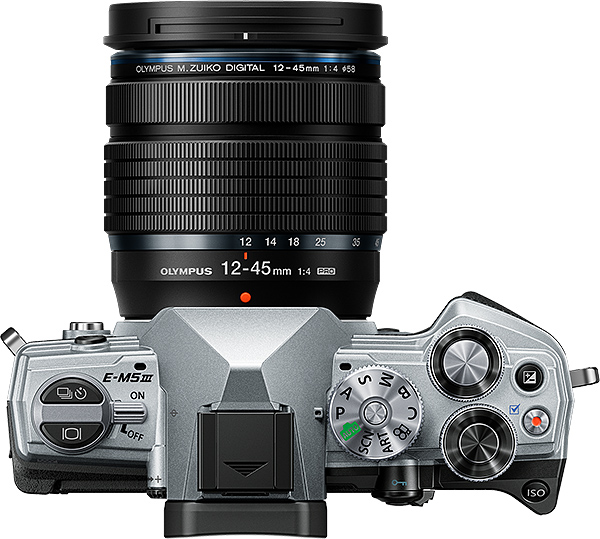 |
Pair the new M.Zuiko 12-45mm F4.0 PRO lens with the recently announced Olympus OM-D E-M5 Mark III to create the ultimate travel combination. As Olympus’ smallest weather-sealed combination to date, at just 670 g/23.6 oz., you are able to travel with ease and shoot on-the-go, no matter the environment. Enjoy a bright constant aperture of F4.0, along with a myriad of pro features brought to you in the OM-D E-M5 Mark III. Lighten up with this ultimate travel combo and change both your photography and lifestyle forever.
Pricing and Availability
The Olympus M.Zuiko Digital 12-45mm F4.0 PRO lens (black) comes bundled with the LH-61G lens hood, specifically designed to protect the lens and reduce unwanted light entering the lens in backlit situations. The lens will be available April 7, 2020. The lens will have a suggested retail price of $649.99 USD and $849.99 CAD.
Olympus 12-45mm f/4 Pro M.Zuiko Digital ED
Your purchases support this site
Micro Four Thirds - Black
Olympus 12-45mm f/4 Pro M.Zuiko Digital ED User Reviews
-
The optical performance is stunning.AF is less silent than I have become used to, and also seems a little less rapid and secure.
Preliminary review:
reviewed October 6th, 2024 (purchased for $395)
Optics actually exceed my expectations. Very sharp right from maximum aperture, with a beautiful rendering. Genuinely sharp right into the corners. First test against my 25/1.8 suggests a very slight advantage to this zoom, which if it proves to be correct seems pretty amazing. More tests against other lenses to follow.
On the debit side: AF which I can hear in a quiet room and which seems to me to lack the last ounce of speed and security. -
Compact, lightweight, good build quality, sharp, fast focusing.Nothing really.
I tried this lens to see if it could replace the 12-40mm f/2.8. It can, as long as you don't absolutely need the f/2.8 aperture. The 12-45mm f/4 is a very capable lens and every bit as good as it's bigger, faster and more expensive brother.
reviewed January 13th, 2023
This 12-45mm f/4 is very sharp at every setting up to f/11 (when diffraction starts to kick in). Contrast and colors are good too. I can't fault it. If I need a fast aperture, I use a prime anyway. The 12-45mm f/4 is compact, lightweight and the build quality is great. It balances perfectly with E-M1 , E-M5 and E-M10 series cameras. All in all a beautiful little lens and I prefer it over the 12-40mm, which now seems a bit big and bulky. -
Light and compactmacro only at extreme wide angle loss of speed is noticeable
I picked this lens up to see if it would be able to substitute for my trusty 12-40 2.8. It doesn't. The "macro" rating is a cheat. As the lens must be at 12 in order to get anywhere close focus, you are virtually touching the subject. In short- this is a cheat. The loss of lens speed absolutely is noticeable. While the compact size is very handy, you sacrifice quite a bit. Honestly, if I want a replacement for my 12-40, the old 12-50 will do in a pinch and has a very useable macro feature.
reviewed November 2nd, 2022


